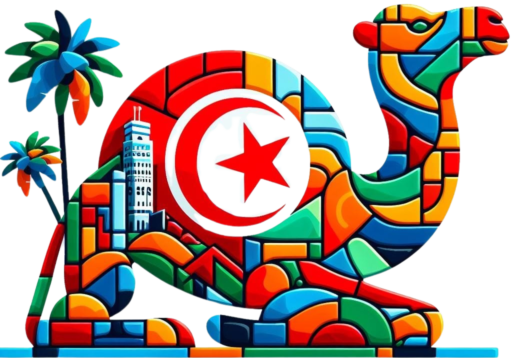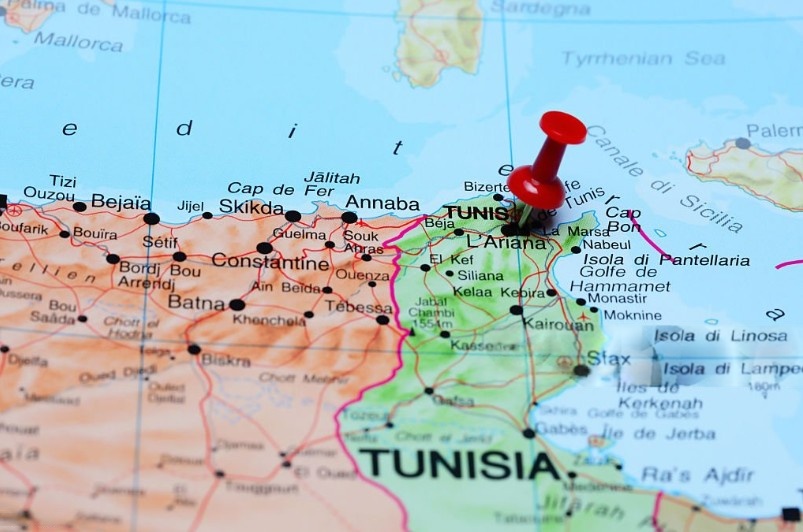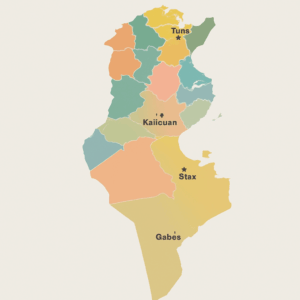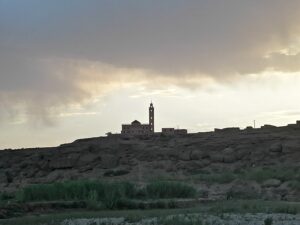Table of Contents
- Introduction: A Crossroads of Cultures and Civilizations
- Summary
- The Northern Regions of Tunisia: Characteristics and Attractions
- The Central Regions of Tunisia: Landscapes and Traditions
- The Southern Regions of Tunisia: Culture and Population
- The Central Government of Tunisia: Structure and Functions
- The Governorates of North-East Tunisia: Economy and Natural Resources
- The Governorates of North-West Tunisia: Development and Infrastructure
- The Governorates of Central Tunisia: Agriculture and Tourism
- The Governorates of South-East Tunisia: Traditions and Crafts
- The Governorates of South-West Tunisia: Communities and Languages
- Conclusions: The Importance of Regions and Governorates in Modern Tunisia
- FAQs
Introduction: A Crossroads of Cultures and Civilizations
Tunisia, located in the heart of the Maghreb, is a country that boasts a strategic position in North Africa, facing the Mediterranean Sea to the north. Its geography is characterized by a variety of landscapes, ranging from sandy coasts to the Atlas Mountains, to the vast deserts of the Sahara. The capital, Tunis, is located in the northern part of the country and is an important cultural and political center.
Tunisia is bordered to the east and north by the sea, to the south by Libya, and to the west by Algeria. This position has historically made Tunisia a crossroads of cultures and civilizations, influenced by Phoenicians, Romans, Arabs, and the French. The history of Tunisia is rich and complex.
Founded by the Phoenicians in the 9th century BC, the city of Carthage became a powerful maritime empire. After the Punic Wars, Carthage was destroyed by the Romans in 146 BC, but the region continued to prosper under Roman rule. With the arrival of Islam in the 7th century, Tunisia underwent a significant cultural and religious transformation.
Over the centuries, the country came under the control of various dynasties, including the Aghlabids and the Hafsids, until it became a French protectorate in the 19th century. Tunisia gained independence in 1956, initiating a process of modernization and social reform that has shaped the contemporary country.
Summary
- Tunisia is located in North Africa and has a rich and complex history dating back thousands of years.
- The northern regions of Tunisia are characterized by beautiful beaches, ancient Roman ruins, and fascinating cities like Tunis and Carthage.
- The central regions of Tunisia offer breathtaking landscapes, such as the Sahara Desert, and maintain unique cultural traditions.
- The southern regions of Tunisia are rich in culture and populations that maintain ancient traditions.
- The governorates of north-east Tunisia are important for the country’s economy and natural resources, with a strong industrial and agricultural presence.
The Northern Regions of Tunisia: Characteristics and Attractions
The northern regions of Tunisia are characterized by a Mediterranean climate, with mild winters and hot, dry summers. This area is known for its lush vegetation, which includes olive groves and vineyards, making it one of the most fertile areas in the country. Coastal cities like Bizerte and Hammamet are famous for their enchanting beaches and crystal-clear waters, attracting tourists from all over the world.
Hammamet, in particular, is renowned for its luxury resorts and its craft traditions, such as the production of ceramics and textiles. Another significant attraction in the northern region is the city of Carthage, an archaeological site that bears witness to the greatness of the ancient Phoenician empire. The remains of the Antonine Baths and the Roman theater are just some of the wonders that visitors can explore.
Furthermore, the capital Tunis offers a rich cultural experience with its lively souk, museums, and the historic medina, a UNESCO World Heritage site. The northern region is therefore a fascinating mix of history, culture, and natural beauty.
The Central Regions of Tunisia: Landscapes and Traditions
The central regions of Tunisia feature a diverse landscape that ranges from green hills to arid plains. This area is less touristy than the north but offers an authenticity that attracts those seeking more genuine experiences. Cities like Kairouan, considered the fourth holy city of Islam, are famous for their historic mosques and traditional markets.
The Great Mosque of Kairouan is an extraordinary example of Islamic architecture and represents an important pilgrimage center. In addition, the central region is known for its agricultural traditions. The inhabitants cultivate cereals, olives, and dates, contributing to the local economy.
The traditional festivals related to the harvest of agricultural products are significant events for local communities, where the bond with the land and ancestral traditions are celebrated. These celebrations offer visitors the opportunity to immerse themselves in Tunisian culture through folk dances, typical foods, and local crafts.
The Southern Regions of Tunisia: Culture and Population
The southern regions of Tunisia are characterized by a desert climate and breathtaking landscapes that include sand dunes and lush oases. This part of the country is inhabited by various communities that have kept their cultural traditions alive over the centuries. Cities like Douz, known as the “gateway to the desert,” are famous for the International Festival of the Sahara, which celebrates Bedouin culture through music, dance, and equestrian competitions.
The southern population is mainly composed of Berbers and Arabs, each with its own customs and traditions. Handicrafts are a fundamental part of daily life; colorful textiles, carpets, and jewelry are produced with techniques passed down from generation to generation. Furthermore, the cuisine of southern Tunisia is rich in intense flavors, with dishes based on lamb, couscous, and local spices.
The culture of the south is therefore a mosaic of historical influences and local traditions that make this region unique.
The Central Government of Tunisia: Structure and Functions
The central government of Tunisia is structured as a semi-presidential republic, in which the President of the Republic holds significant powers along with the Parliament. The Tunisian political system has undergone reforms after the 2011 revolution, which led to the fall of the authoritarian regime of Ben Ali. Today, the government is composed of three main branches: executive, legislative, and judicial.
The President of the Republic is directly elected by the people and is tasked with ensuring national unity and representing the country at an international level. The Tunisian Parliament is bicameral and is composed of the Assembly of the Representatives of the People and the National Council of Regions. These legislative institutions are responsible for passing laws and monitoring the government’s work.
Finally, the judicial system is independent and is responsible for ensuring the fair and just application of laws.
The Governorates of North-East Tunisia: Economy and Natural Resources
The governorates of north-east Tunisia are known for their diversified economy based on agriculture, fishing, and tourism. This region benefits from a favorable climate that allows for the cultivation of agricultural products such as olives, citrus fruits, and cereals. Coastal cities like Nabeul are famous for the production of handmade ceramics and for lively markets offering fresh produce.
In addition, north-east Tunisia has access to significant natural resources, including phosphate mineral reserves that are fundamental to the chemical industry. Phosphate mining has historically been a major source of income for the country. However, this activity has also raised environmental concerns related to the sustainability of natural resources.
Therefore, it is crucial to find a balance between economic development and environmental protection in this region.
The Governorates of North-West Tunisia: Development and Infrastructure
The governorates of north-west Tunisia are characterized by a mountainous geography that offers opportunities for tourism development related to ecotourism and outdoor adventure. This region has seen significant investment in infrastructure in recent years, with projects aimed at improving roads and public transport to facilitate access to tourist sites. Cities like Béja and Jendouba are important centers for agriculture and local crafts.
Olive oil production is particularly relevant in this area, with many farms offering guided tours to tourists interested in learning about the olive oil production process. In addition, the northwest is also home to natural parks such as Ichkeul National Park, a UNESCO World Heritage site, which attracts visitors for its unique biodiversity.
The Governorates of Central Tunisia: Agriculture and Tourism
The central governorates of Tunisia are known for their traditional agriculture and for historical sites that attract tourists from all over the world. The region is famous for the production of cereals and dates, with large plantations extending along the fertile plains. Traditional agricultural techniques are still practiced in many areas, keeping local customs alive.
Tourism in the central region focuses on historic cities such as Kairouan and Sbeitla, where visitors can explore ancient mosques and Roman ruins. Kairouan is particularly known for its Great Mosque, considered one of the masterpieces of Islamic architecture. In addition, cultural events such as music festivals and craft fairs offer tourists the opportunity to immerse themselves in contemporary Tunisian culture.
The Governorates of South-East Tunisia: Traditions and Crafts
The governorates of south-east Tunisia are characterized by a rich craft tradition that reflects the cultural heritage of the region. Local communities are famous for the production of hand-woven carpets, decorated ceramics, and silver jewelry. These craft products not only represent an important source of income for local families but also a way to preserve cultural traditions.
Cities like Medenine are known for their traditional mud-brick architecture and for the lively souks where artisans sell their creations. In addition, the southeast also hosts cultural festivals that celebrate Bedouin music and traditional dances, attracting visitors interested in discovering Tunisia’s cultural roots.
The Governorates of South-West Tunisia: Communities and Languages
The governorates of south-west Tunisia are characterized by significant linguistic diversity due to the presence of different ethnic communities. Here, not only standard Arabic is spoken, but also various Berber dialects that reflect the cultural identity of the local populations. The Berber communities have kept their linguistic traditions alive through music, poetry, and crafts.
Cities like Tozeur are famous for their lush oases surrounded by date palms and for the traditional mud-brick architecture. The local population is welcoming to visitors and is proud of its cultural roots. Local festivals offer a unique opportunity to immerse oneself in the daily life of the communities of the southwest.
Conclusions: The Importance of Regions and Governorates in Modern Tunisia
The regions and governorates of Tunisia play a crucial role in the economic and social development of the modern country. Each area has unique characteristics that contribute to the nation’s cultural diversity. From the rich history of the northern regions to the craft traditions of the southwest, each governorate offers opportunities to explore the complexity of contemporary Tunisian society.
Furthermore, the sustainable development of natural resources and infrastructure is essential to ensure a prosperous future for the country’s diverse communities. The enhancement of local traditions through responsible tourism can help preserve Tunisia’s cultural identity while promoting economic development. In this context, the Tunisian regions are not just geographical entities but also represent the beating heart of modern Tunisian culture.
FAQs
What are the regions and governorates of Tunisia?
The regions and governorates of Tunisia are administrative divisions of the country. The regions are composed of multiple governorates and are above them in terms of administration.
How many regions are there in Tunisia?
Currently, Tunisia is divided into 24 governorates, which in turn are grouped into 24 regions.
What characterizes the different regions of Tunisia?
The regions of Tunisia have different geographical, cultural, and economic characteristics. For example, the Tunis region is characterized by the presence of the capital and a more developed economy, while the Kebili region is predominantly desert.
What are some interesting facts about the regions and governorates of Tunisia?
Some interesting facts about the regions and governorates of Tunisia include the presence of archaeological sites of great historical importance, such as Carthage in the Tunis region, and the cultural diversity among the various regions, influenced by proximity to other countries like Algeria and Libya.






